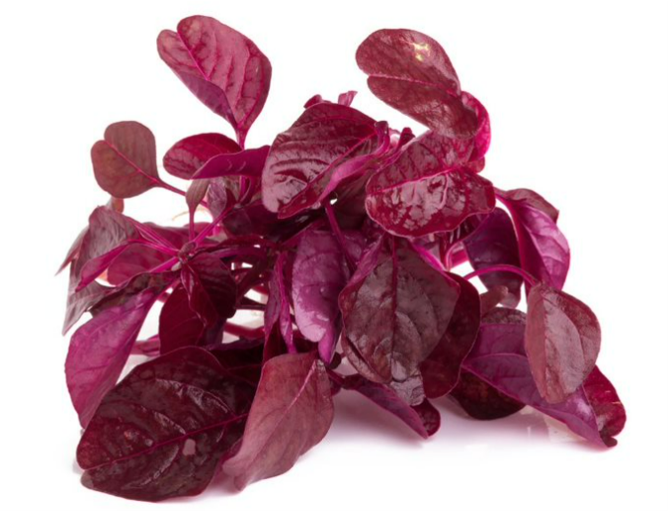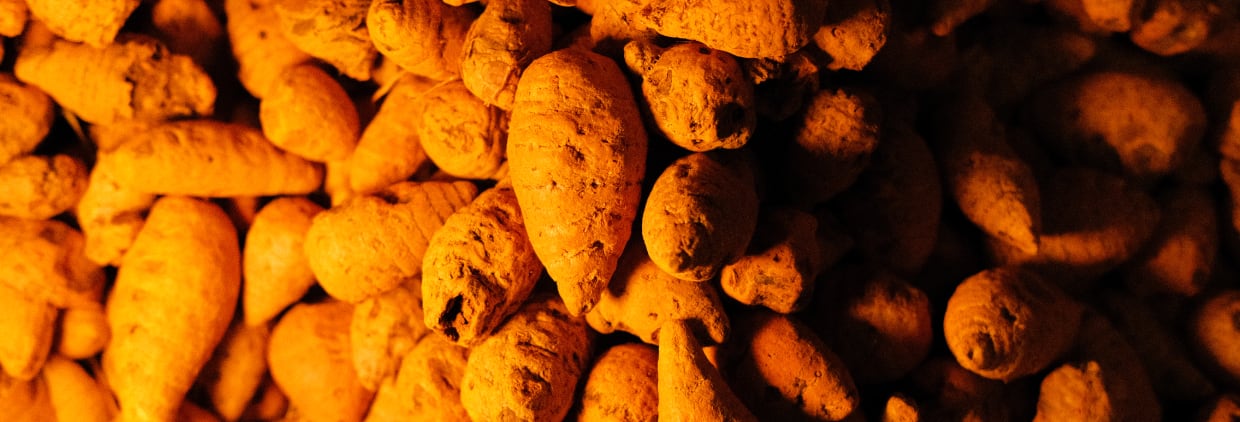In both competitive sport and the day-to-day demands of physically engaged careers, there’s a common denominator underpinning performance: the body’s ability to deliver oxygen efficiently.
Whether it’s a cyclist pushing through a punishing climb, a firefighter managing heavy gear in a heat-intense environment or an office professional staying physically active outside of work, efficient blood circulation is central to endurance, focus and recovery.
This efficiency hinges on a small but powerful signalling molecule – nitric oxide (NO). And in the research and product development space, few natural nitrate ingredients have generated as much discussion lately as Oxystorm®, a standardized extract of red spinach (Amaranthus) now being used for applications in both sports nutrition and health support for active professionals.
Nitric oxide: The unsung performance molecule
Nitric oxide is a short-lived gas produced naturally in the body, but its impact is wide-ranging. At the cardiovascular level, NO signals the smooth muscles of blood vessels to relax – a process called vasodilation. This widening of vessels boosts blood flow, helping ensure oxygen and nutrients reach the muscles, brain and vital organs at the time they’re needed most.
The downstream effects of optimal nitric oxide activity can include:
- Improved endurance by delaying the onset of muscular fatigue
- Greater aerobic capacity, allowing for sustained, higher-intensity effort
- Faster recovery, by promoting nutrient delivery and waste removal post-exercise
- Cardiovascular efficiency, with lower exertion for the same output
These benefits are relevant in both professional sports and the broader world of physically active individuals – hence the rising interest in Oxystorm for sports nutrition and active professionals.
How the body gets nitric oxide
The body has two main routes for generating NO:
- The endogenous L-arginine pathway, mediated by nitric oxide synthase (NOS) enzymes
- The dietary nitrate-nitrite pathway, where plant-sourced nitrates are converted into nitrites and, subsequently, nitric oxide via enzymatic and chemical means
While both routes are important, the dietary pathway is especially attractive to researchers and product formulators because it provides a direct, food-based means of supporting nitric oxide levels.
The limitation of many nitrate sources
Beetroot powders, green leafy vegetables and certain lettuces have long been common nitrate sources in supplements and functional foods. Yet, they come with variability:
- Nitrate concentration can be inconsistent due to agricultural factors like soil composition and harvest timing
- Many rely on oxygen-dependent metabolic steps to fully convert nitrates to NO – reducing their usefulness during intensely anaerobic or low-oxygen activities, such as sprints, maximal lifts or altitude training
This last point has been the focus of significant interest in performance science: can a nitrate source effectively bypass this oxygen-dependence and continue to supply nitric oxide even during hypoxia (low oxygen availability)?
The hypoxia question
Enter Oxystorm for sports nutrition, an extract notable for its highly concentrated and standardized nitrate content – around 9% – which is multiple times higher than many conventional vegetable sources.
More crucially for performance contexts, Oxystorm’s nitrate-to-NO conversion can occur even in hypoxic conditions. This has potential implications for:
- High-intensity interval training, where oxygen availability fluctuates sharply
- Long-duration endurance events with surges of all-out effort
- Training or competition at altitude
- Physically demanding occupations – a major consideration in the development of Oxystorm for active professionals
From dietary chemistry to real-world application
When nitrates from Oxystorm enter the body, they’re first reduced to nitrites via oral bacteria, then further converted to nitric oxide through various pathways. Under low oxygen levels, these alternative pathways – involving molecules like myoglobin, haemoglobin and xanthine oxidoreductase – become increasingly important.
This means that, theoretically, Oxystorm maintains performance benefits in precisely the scenarios where oxygen delivery is under the most strain.
Evidence-based and measured outcomes
Human trials involving Amaranthus-derived nitrates – including formulations containing Oxystorm – have investigated exercise markers such as:
- Ventilatory threshold The point during increasing exercise intensity when breathing rate accelerates sharply
- Time to exhaustion How much longer a subject can sustain activity at a given workload
- Vasodilation Dilates blood vessels
- Improves blood flow and provides more oxygen
Results from such studies suggest enhanced endurance, improved tolerance to high-intensity workloads and faster post-exercise recovery. These are the same domains where both professional athletes and physically active non-athletes often look for tangible performance gains.

Why is hypoxia important?
Hypoxia isn’t just a sports concept. For athletes, it happens during maximal exertion or at altitude. For active professionals, it can occur in real-life conditions like:
- Military operations in mountainous terrain
- First responders working in heavy protective gear
- Divers and underwater construction workers managing breath-hold or compressed air conditions
Maintaining NO production during these states could help sustain performance, delay fatigue and improve recovery timelines – making Oxystorm for active professionals a topic of interest beyond sport.
Versatility in formulation
Oxystorm is water-soluble, stable and able to be incorporated into multiple delivery formats:
- Capsules and tablets for precise dosing
- Ready-to-mix powders for pre- or intra-workout nutrition
- Effervescent drinks offering rapid absorption
- On-the-go gels for endurance events
- Functional foods and beverages for lifestyle integration
- Chewing gum for discreet, portable supplementation
This versatility supports product innovation not only in sports nutrition but also in wellness and occupational health support products.
Connection to broader trends in sports and wellness nutrition
The attention on Oxystorm aligns with several wider market movements:
- Evidence-driven formulation Brands increasingly want ingredients backed by standardised composition and human research
- Plant-based performance Consumers are drawn to natural, plant-derived sources over synthetic forms when it comes to supplements
- Crossover products There’s growing demand for solutions that serve both athletes and active professionals, reflecting the blurring of lines between performance and wellness markets
These trends suggest that Oxystorm is not limited to niche sports nutrition – its potential spans consumer categories.
The nitric oxide continuum: From sport to everyday performance
The most engaging angle for R&D teams is that the same physiological principle applies across contexts. Whether Oxystorm is used for sports nutrition – helping an endurance cyclist edge past their competition – or supporting a surgeon’s long hours in the operating theatre, the basic biochemistry of nitric oxide remains the foundation.
The challenge and opportunity for formulators is to contextualise its role for each audience:
- For sports, the language is often about VO₂ max, lactate threshold and time-trial performance
- For professionals, it’s about sustained energy, reduced fatigue and cardiovascular resilience
Questions still being explored
Although clinical evidence is growing, Oxystorm also raises interesting research avenues:
- Could sustained dietary nitrate support influence cardiovascular risk profiles over decades?
- How does repeated supplementation affect adaptations to training?
- Can nitrate-rich interventions improve cognitive performance by enhancing cerebral blood flow in demanding mental-physical hybrid roles?
Exploring these areas could further solidify the ingredient’s role in both sports-specific and broader performance nutrition platforms.
The takeaway for the industry
Efficient oxygen delivery is fundamental to human performance, whether the context is sport, occupational task or simply an active lifestyle. Oxystorm, with its high nitrate concentration and ability to function under varying oxygen conditions, offers an intriguing case study in how plant-based bioactives can be fine-tuned for specific physiological demands.
The presence of Oxystorm for sports nutrition and active professionals in industry conversations reflects a widening appreciation: performance is not the sole domain of competitive athletes. The need to sustain output, adapt to stress and recover efficiently now spans multiple sectors.
As the science of nitric oxide evolves, ingredients that can bridge the gap between sports performance and everyday endurance may emerge not as niche solutions, but as foundational components of the future nutrition landscape. Oxystorm sits firmly within that emerging category – inviting product developers, sports scientists and occupational health innovators to explore just how far nitrate science can be taken.





